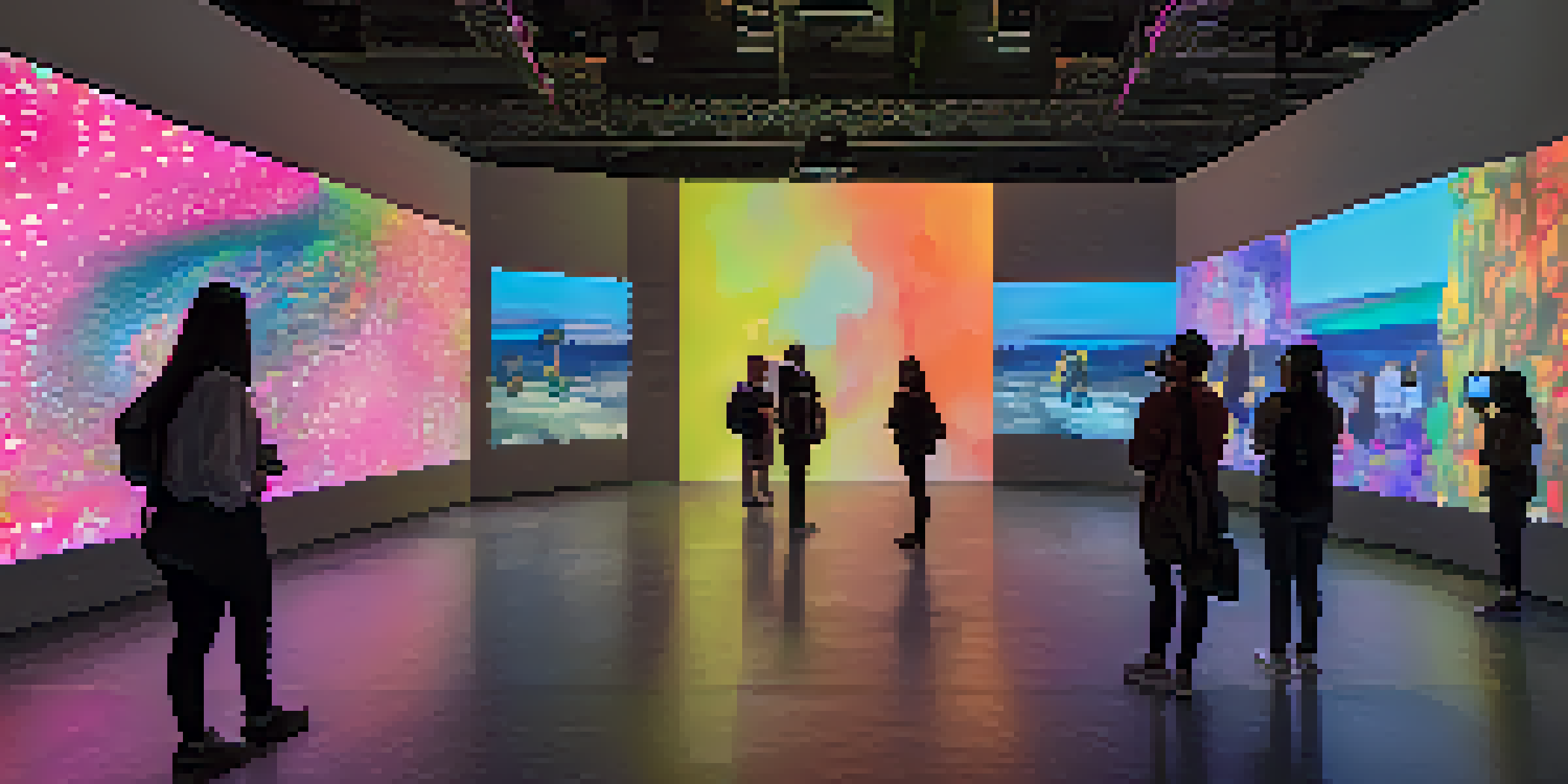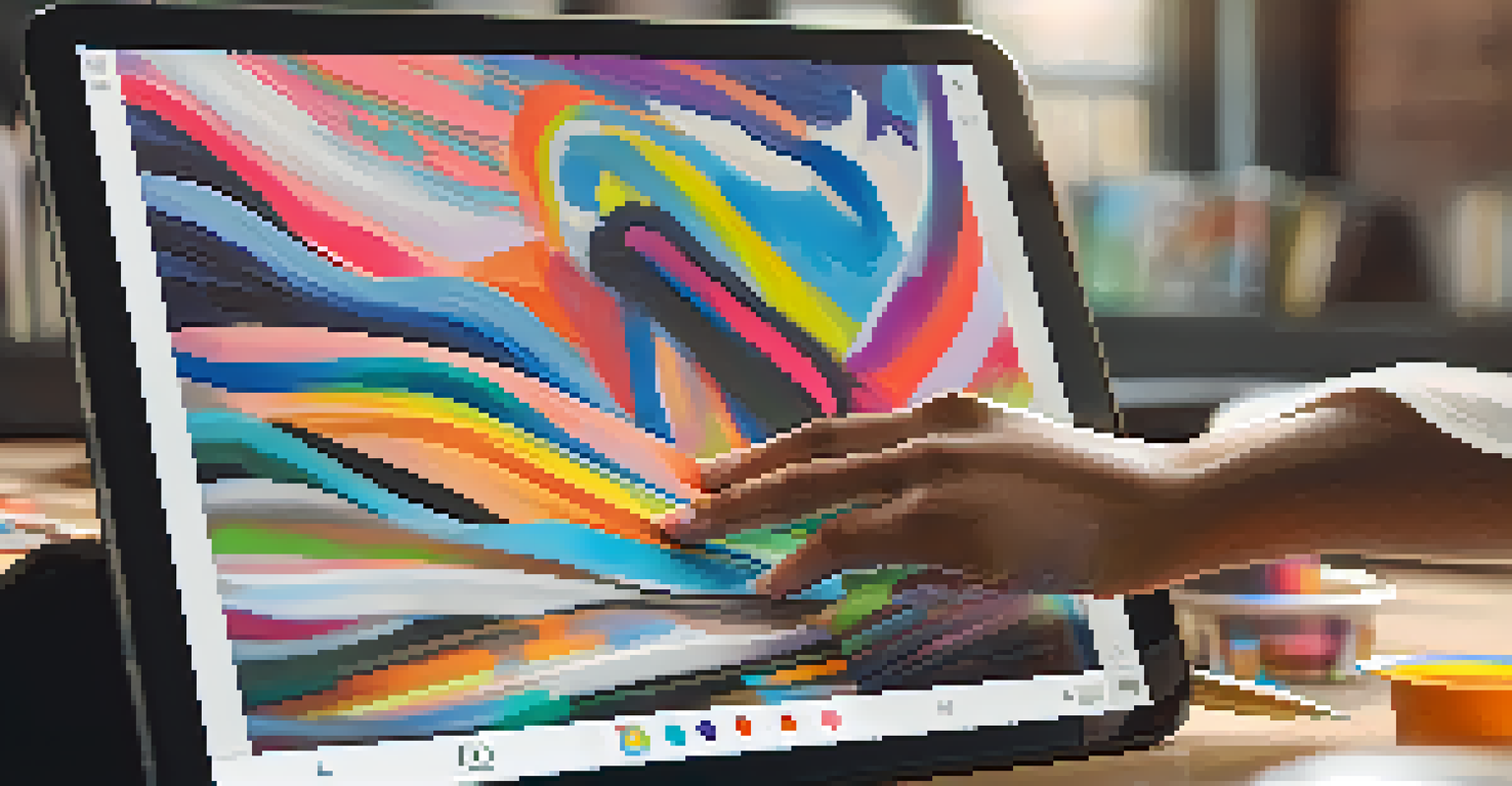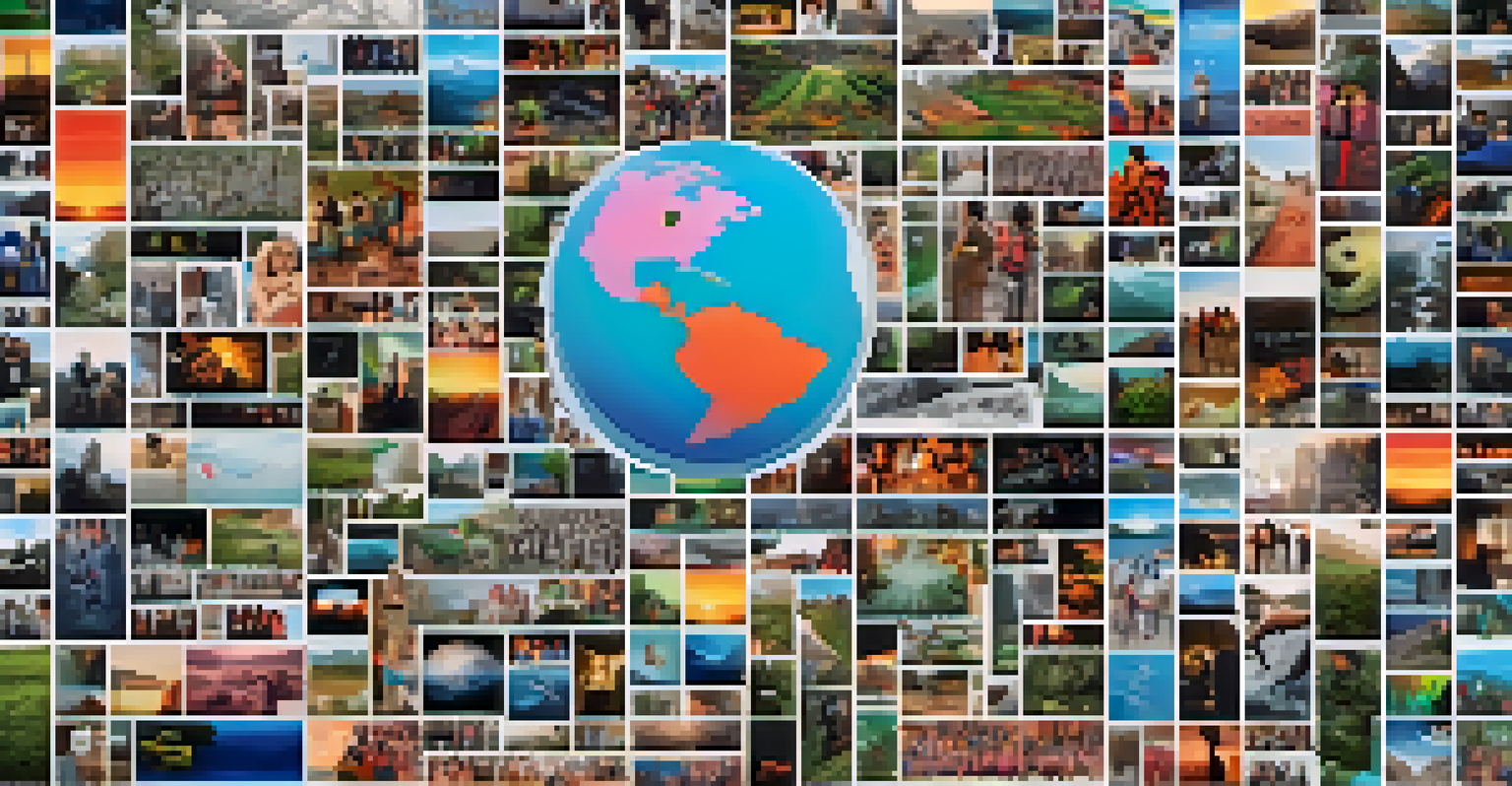Virtual Platforms for Activism: Art in the Digital Age

The Rise of Digital Activism in the Art World
In recent years, digital activism has gained significant traction, especially in the art community. Artists are increasingly utilizing virtual platforms to express their messages, advocate for change, and engage audiences. This transformation reflects how technology can amplify voices that might otherwise go unheard.
Art is not a mirror to hold up to society, but a hammer with which to shape it.
Social media, online exhibitions, and digital galleries provide spaces where artists can share provocative works that challenge societal norms. By harnessing these platforms, they can reach global audiences, creating a ripple effect of awareness and action. It's a modern-day renaissance that merges creativity with activism.
Moreover, these digital spaces allow for real-time interaction and collaboration between artists and their supporters. This dynamic fosters a sense of community and shared purpose, making the fight for social justice feel more accessible and engaging. Digital art is not just a medium; it's a movement.
How Technology Transforms Traditional Activism
Technology has revolutionized traditional activism, offering new tools for engagement and outreach. With the click of a button, artists can mobilize support for various causes, from climate change to human rights. This immediacy allows for quick responses to current events, keeping the momentum of advocacy alive.

For instance, virtual art exhibitions can be organized in mere days to coincide with a pressing issue, making it possible to gather support quickly. These platforms also enable the collection of donations for causes directly through the artwork, seamlessly blending art and activism. It's a striking example of how innovation can enhance traditional methods.
Digital Activism Empowers Artists
Artists are leveraging digital platforms to advocate for social change, making their voices heard on a global scale.
Furthermore, technology breaks down barriers, allowing individuals from diverse backgrounds to participate in and contribute to activism. This inclusivity enriches the dialogue and broadens the impact of the movement. The digital age is not just changing how we create art; it's redefining how we advocate for change.
Virtual Exhibitions: A New Frontier for Artists
Virtual exhibitions have emerged as a groundbreaking way for artists to showcase their work. Unlike physical galleries that may limit accessibility, virtual platforms invite anyone with internet access to experience art from anywhere in the world. This democratization of art allows for a diverse audience to engage with meaningful narratives.
The role of the artist is to make the revolution irresistible.
Artists can curate online experiences that resonate with contemporary issues, allowing viewers to immerse themselves in the themes presented. For example, interactive installations can prompt participants to reflect on social justice or environmental crises, blurring the lines between observer and activist.
These virtual spaces also encourage collaboration across borders, enabling artists to work together on projects that address global challenges. Such partnerships amplify their voices and create a united front for change. In this way, virtual exhibitions are not just showcases but catalysts for dialogue and action.
Social Media: Amplifying Artistic Voices
Social media platforms have become essential tools for artists to amplify their messages. Instagram, Twitter, and TikTok, among others, allow creators to share their work instantly and engage with followers directly. This immediacy not only builds community but also fosters a sense of urgency around the issues they address.
Artists can leverage hashtags and trending topics to reach wider audiences, often sparking viral movements. For instance, a powerful piece of art shared on social media can lead to a wave of support for a specific cause, encouraging others to join the conversation. This level of engagement can turn passive viewers into active participants in advocacy.
Technology Enhances Engagement
Emerging technologies and social media are transforming traditional activism, fostering real-time interaction and broadening audience participation.
Moreover, social media enables artists to share behind-the-scenes content and their personal stories, creating connections that deepen the impact of their work. This transparency invites empathy, encouraging audiences to understand the issues on a more personal level. In this way, social media acts as a bridge between art and activism.
Challenges of Digital Activism in the Art Community
While digital platforms offer exciting opportunities for activism, they also present unique challenges. One significant issue is the oversaturation of content, where important messages can get lost in the noise of social media. Artists must navigate this clutter to ensure their voices are heard above the din.
Additionally, online activism can sometimes lead to performative actions that lack depth or genuine commitment. It’s vital for artists and activists to go beyond surface-level engagement and foster meaningful connections with their audiences. This requires a thoughtful approach that prioritizes authenticity over popularity.
Moreover, the digital divide remains a significant barrier, as not everyone has equal access to technology. This disparity can hinder the inclusivity that digital platforms aim to promote. Addressing these challenges is crucial for creating a more equitable space for art and activism to thrive.
The Role of Digital Art in Social Movements
Digital art plays a pivotal role in contemporary social movements, serving as both a tool for awareness and a form of protest. Artists use their platforms to visualize struggles, bringing attention to issues like racial inequality, climate change, and gender rights. These visual narratives can be incredibly powerful, igniting conversations and inspiring action.
For example, during the Black Lives Matter movement, digital art created by various artists helped amplify the voices of marginalized communities. Artworks shared online not only spread awareness but also fostered solidarity among supporters. This highlights how digital art can transform personal experiences into collective movements.
Future Trends in Art and Activism
Innovations like virtual and augmented reality will shape the future of digital activism, creating immersive experiences that engage and inspire audiences.
In essence, digital art becomes a rallying cry in times of social unrest, encouraging individuals to reflect, share, and take action. It allows artists to contribute to larger narratives while building a community of advocates. This synergy between art and activism is crucial in driving meaningful change.
Future Trends in Digital Activism and Art
As technology continues to evolve, so too will the ways artists engage in activism. Emerging technologies like virtual reality (VR) and augmented reality (AR) offer exciting possibilities for immersive experiences that can captivate audiences. Imagine stepping into a virtual world that tells a story of resilience and hope—this is the future of digital activism in art.
Furthermore, the integration of artificial intelligence (AI) in art creation can lead to new forms of expression, allowing artists to push boundaries and explore complex themes. These innovations will undoubtedly open up new avenues for dialogue and participation, making activism more interactive and engaging.

Ultimately, the future of digital activism lies in collaboration and creativity. As artists and activists continue to forge partnerships across disciplines, they can create impactful works that resonate with diverse audiences. This evolving landscape promises a vibrant and dynamic intersection of art and advocacy for years to come.